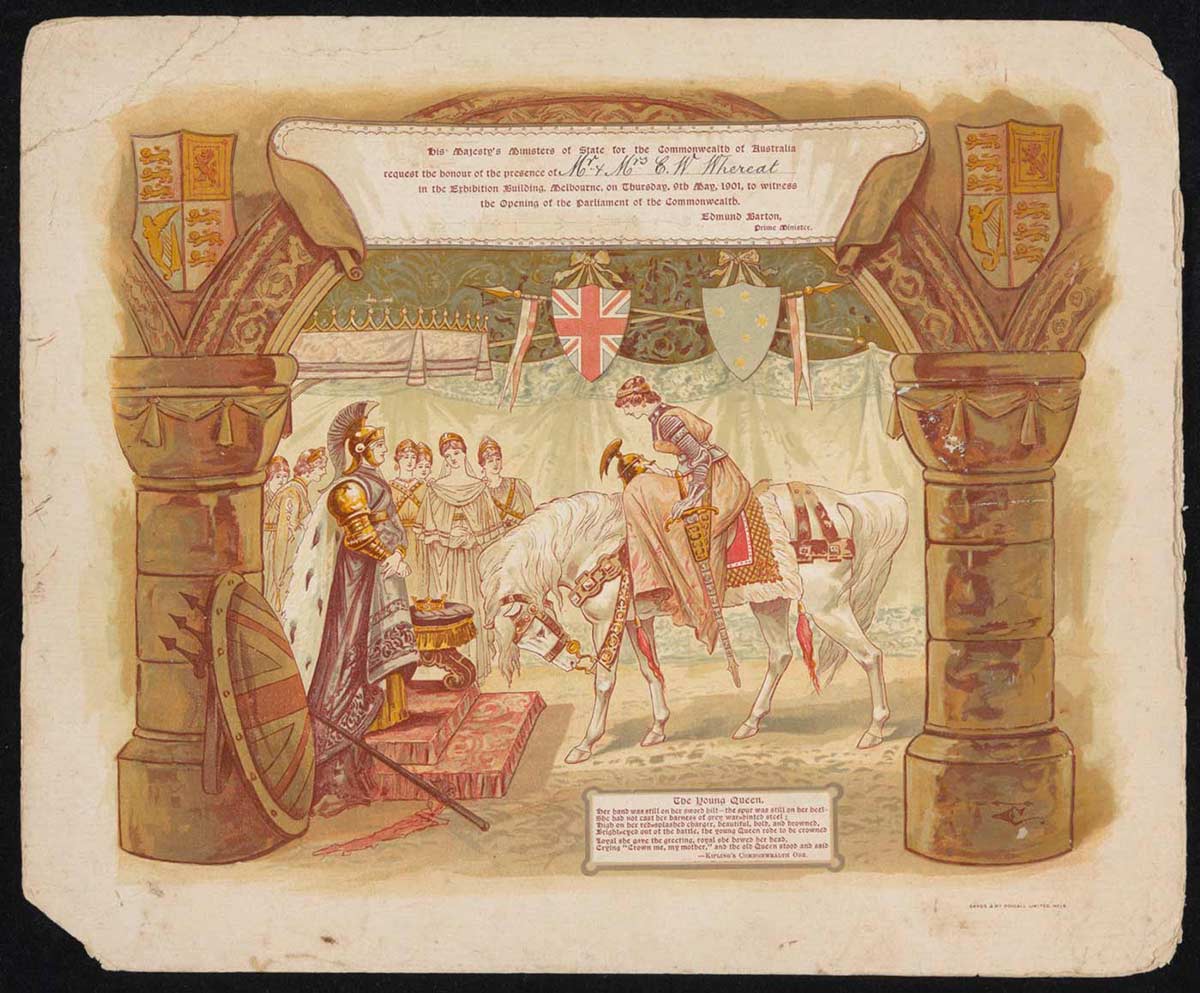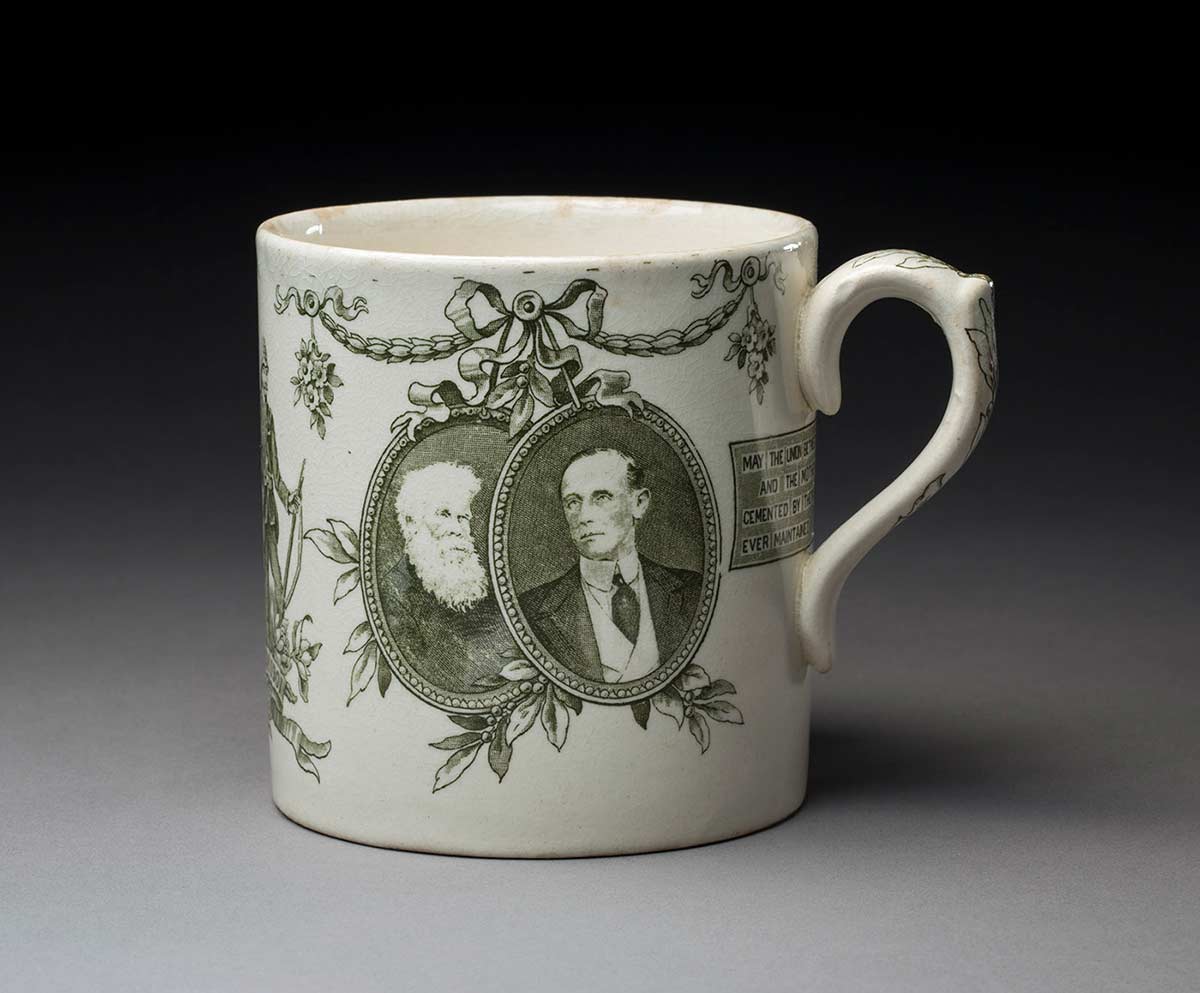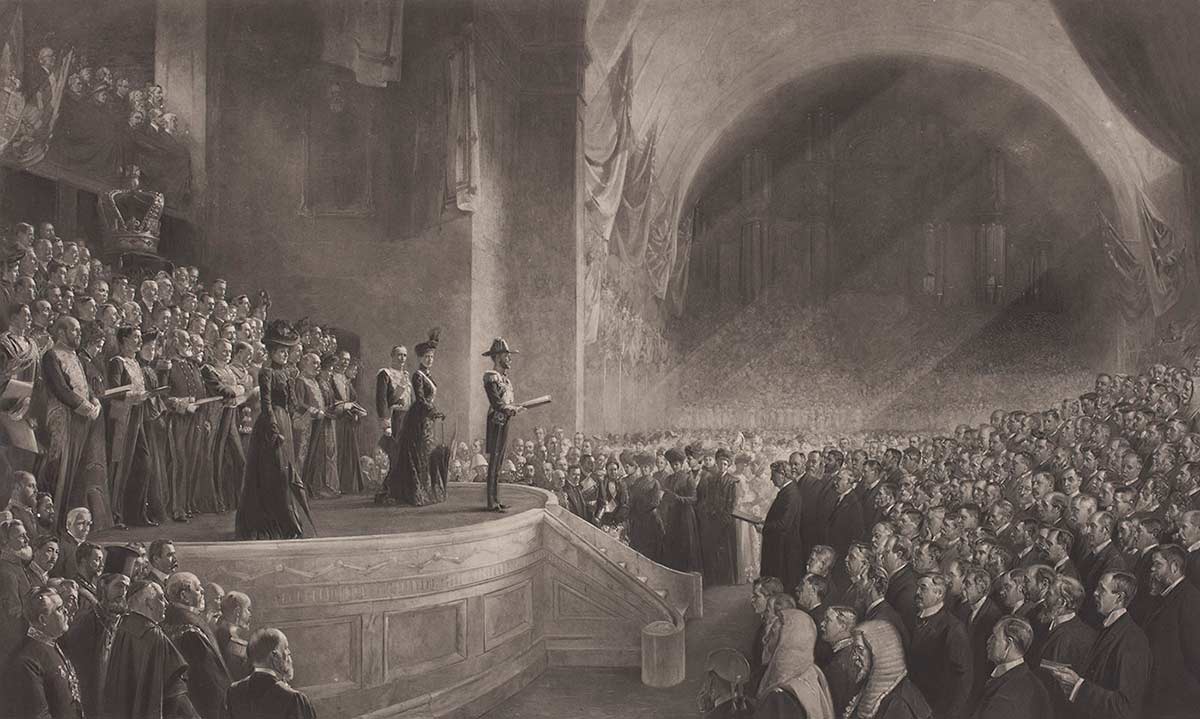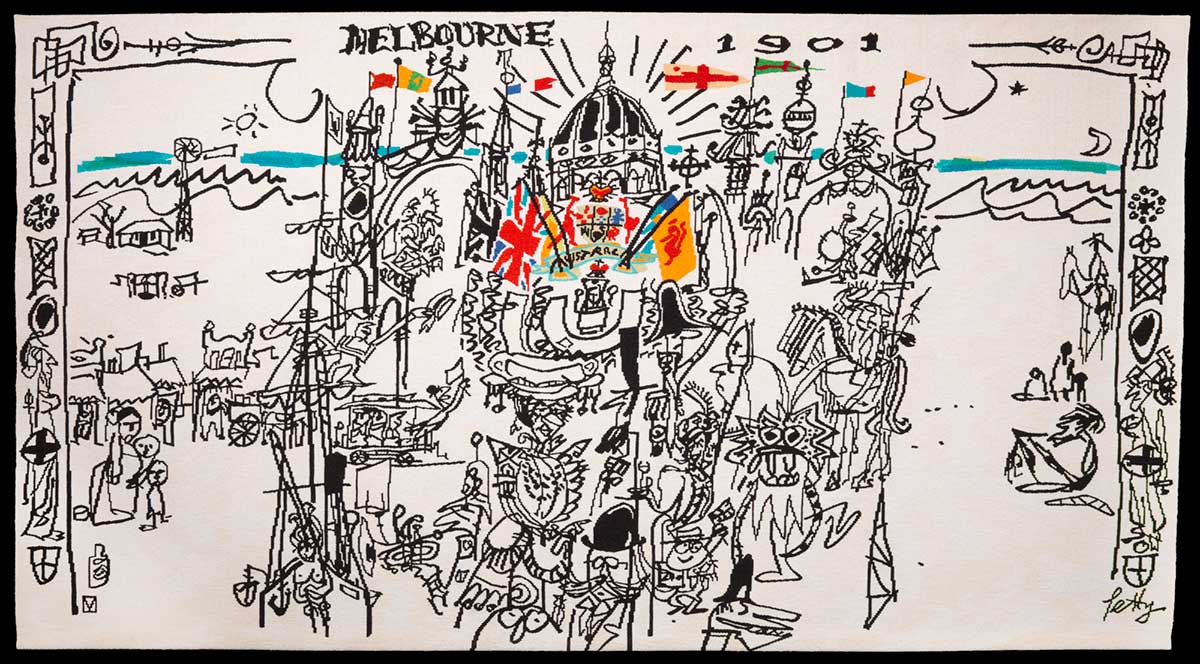Australia became a nation on 1 January 1901, when the British Parliament passed legislation enabling the six Australian colonies to collectively govern in their own right as the Commonwealth of Australia.
It was a remarkable political accomplishment that had taken many years and several referenda to achieve.
The Children’s Newspaper, 1899:
Tuesday June 20 was a red-letter day in Australian history. It was the day on which the people of New South Wales – the best and wealthiest of the Australian Colonies – had to decide whether they were willing to accept the Federation Bill … A very large vote was recorded all over the colony, and a majority of … electors decided that Federation under the Bill was desirable. Enormous crowds thronged the Sydney streets on Tuesday evening to get the earliest news of the voting, and as the returns came in there was loud and long continued cheering.
A brief history of Australia’s journey to Federation, in live-sketch animation, as told by historian David Hunt

Lead-up to Federation
Australia in the late 19th century consisted of six self-governing British colonies that were subject to the British Parliament. Each colony had its own – often quite distinct – laws, railway gauge, postage stamps and tariffs.
Problems caused by these differences led to discussions about the benefits of uniting as a nation, under a federal system of governance. The colonies of New Zealand and Fiji were also part of Federation discussions.
In addition, matters of defence, foreign policy, immigration, trade, transport and national pride were growing in importance among the colonies.
In 1880 the Australian Natives’ Association – made up of white men born in Australia – committed itself to Federation. This provided most of the organisational and financial base for a number of Federation leagues, which formed later to work towards a united Australia.
The Federal Council of Australasia was formed in 1885 to resolve intercolonial issues, including customs duties and defence. As New South Wales, New Zealand and, for a time, South Australia, did not join the Council, it dissolved in 1889.
Parkes and the ‘Tenterfield address’
In 1889 Sir Henry Parkes, Premier of the Colony of NSW, called for a national government in a speech at Tenterfield in northern New South Wales.
The ‘Tenterfield address’ highlighted the need for ‘one great Federal army’ for Australia’s defence. It also called for an Australasian convention where parliamentary representatives from the colonies would develop a constitution which would provide for a federal government and a federal parliament:
The opportunity has arisen for the consideration of this great subject and I believe that the time is at hand … when this thing will be done. Indeed, this great thing will have to be done, and to put it off will only tend to make the difficulties which stand in the way greater.

Constitutional conventions
With Parkes as its president, the National Australasian Convention took place in Sydney in 1891. Delegates from each colony, and from New Zealand, decided on the name the ‘Commonwealth of Australia’.
Samuel Griffiths, the then Premier of Queensland, is credited with writing the draft constitution, but it was based on a version written by Tasmanian delegate Andrew Inglis Clark.
Clark’s draft was influenced by the United States’ Constitution and several British Acts. These formed the basis of Australia’s hybrid system of government, colloquially known as ‘Washminster’ (Washington and Westminster).
Delegates were in a position to present a draft Constitution Bill to their respective parliaments. However, the process of Federation was stalled by the economic depression of the 1890s, with its high levels of unemployment and strikes.
The NSW town of Corowa held a Federation League Rally in 1893 where it was proposed that the Australian people themselves would vote for Federation.
The second Constitutional Convention (1897–8) was held in Adelaide, Sydney and Melbourne. NSW parliamentarian Edmund Barton became the de facto leader of the federation campaign following the death of Parkes in 1896.
At the convention, the basic principles of Federation – such as the idea of responsible government and the balancing of state and federal powers – were agreed upon. A Constitution Bill was drafted in 1898.
Constitutional referenda
This draft Bill was sent to New South Wales, South Australia, Tasmania and Victoria to be voted on by the electorate, with referenda held in June 1898. There were majority votes in all four colonies. However, the enabling legislation in New South Wales required the support of at least 80,000 voters and this number was not reached.
A second round of referenda were held in 1899 and the ‘yes’ majority was secured in all the participating colonies of New South Wales (this time New South Wales required only a majority of ‘yes’ votes), Tasmania, South Australia, Victoria and Queensland.
Australian author Tom Keneally discusses Federation as one of his top three Defining Moments
British approval of Federation
As the colonies were under British rule, Federation would only come about if the British Parliament passed the necessary legislation. The Commonwealth of Australia Constitution Act 1900 (UK), based on the Constitution Bill as accepted by the colonies, was passed on 5 July 1900.
Queen Victoria gave the legislation royal assent four days later and declared that it would take effect on 1 January 1901.
Western Australia, whose citizens had resisted Federation for some time, only voted on the issue on 31 July 1900, weeks after the constitution received royal assent. Part of the inducement offered to the colony to join the new nation was a promise that the new Commonwealth government would build a railway link to the eastern states.
Appointment of Governor-General and Prime Minister
The English-born Earl of Hopetoun was appointed Australia’s first Governor-General. On 31 December 1900 he swore in the first federal ministry, with Edmund Barton as caretaker Prime Minister. The following day, 1 January 1901, Hopetoun proclaimed the Commonwealth of Australia at a ceremony at Centennial Park, Sydney.
The first federal election took place on 29–30 March 1901, with Barton continuing as Prime Minister. The first federal parliament was opened by the Duke of York in the Melbourne Royal Exhibition Building on 9 May 1901. One of the first things it did was enshrine the White Australia policy in law.
Constitution
The constitution established a bicameral parliament, comprising the Senate as an Upper House of Review, and the House of Representatives or Lower House. Both houses could formulate legislation to make laws on behalf of the new Australian nation. However, the Senate had no power to introduce money bills.
The office of Governor-General was established as the Queen’s representative, and the constitution also established a High Court.
The site for a federal capital was a source of much dispute between Sydney and Melbourne, with both cities wanting the honour.
The compromise was that a separate territory (the Australian Capital Territory) would be established within New South Wales. It was to be at least 100 miles from Sydney and would hold a new capital. Parliament would sit in Melbourne until the new city was built.
The site eventually chosen for the city became Canberra.
Federal system
The constitution divides power between the federal government and the governments of the former colonies, which were renamed ‘states’.
Specific areas of legislative power were given to the federal government, but not for the first 10 years or so. This meant that the states could retain revenues a while longer, including taxation, defence, foreign affairs, migration, naturalisation and aliens, and postal and telecommunications services.
The federal government was also given the power to make laws for Australia’s territories. It did not have powers to make special laws for Indigenous people, a situation not rectified until a referendum in 1967.
States retained power over matters within their borders that were outside the power of the Commonwealth, including police, hospitals, education and public transport.
Federation as a Defining Moment
Federation was a remarkable political achievement. Colonies had jostled to protect their interests. New South Wales had competed with Victoria for influence, and the smaller colonies had feared their interests would be ignored by the larger colonies. But consensus had been reached.
The British monarch remained the head of state, but Australia was now largely self-governing, though it retained close ties to Britain and its empire. Australians remained British citizens until the Nationality and Citizenship Act 1948 provided for separate Australian citizenship.
The six states felt that they belonged together because they shared not only a continent, but also a British background. Federation achieved an independence of sorts for Australia. However, the desire for independence does not seem to have been the main driver of the Federation movement; it was more a desire for unification.
In our collection
Explore Defining Moments

